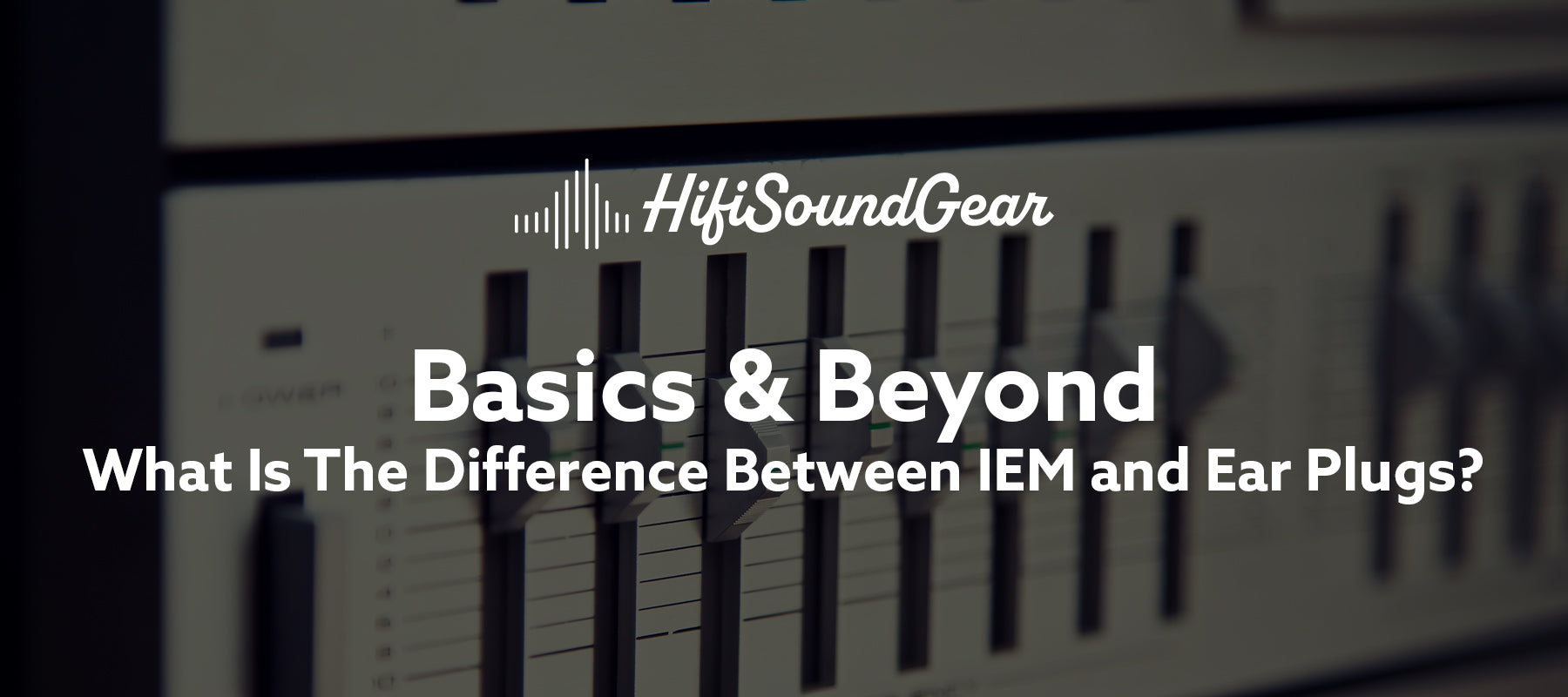
What Is The Difference Between IEM and Ear Plugs?
Ever found yourself confused in the audio aisle, staring at sleek in-ear monitors and wondering if they're just fancy earplugs? One is designed to pump crystal-clear audio directly into your ears, while the other is built to block sound out entirely. Understanding this distinction isn't just about making a smart purchase - it's about protecting your hearing while enjoying the audio experience you actually want.
Understanding In-Ear Monitors (IEMs)

In-ear monitors are professional-grade audio devices originally designed for musicians and audio professionals. They deliver high-fidelity sound directly into your ear canal with remarkable precision and clarity.
Unlike regular earbuds, IEMs feature sophisticated internal components including balanced armature drivers, dynamic drivers, or hybrid configurations that handle different frequency ranges.
What makes IEMs special? They often include multiple driver units dedicated to bass, mids, and treble, along with crossover networks that separate audio frequencies. You'll find them available in universal fit options with interchangeable tips or custom-molded versions built from ear impressions.
Musicians use them for stage monitoring, audiophiles rely on them for critical listening, and everyday music lovers appreciate their superior sound quality. While IEMs do provide passive noise isolation as a bonus, that's not their primary function - they're built to deliver exceptional audio, not block it out.
Understanding Ear Plugs

Ear plugs are safety devices designed specifically to reduce harmful noise levels and protect your hearing. They create a physical barrier in your ear canal that absorbs and reflects sound waves before they reach your eardrum. Their effectiveness is measured through the Noise Reduction Rating (NRR), which tells you exactly how many decibels they'll reduce.
You'll encounter several types: foam ear plugs offer maximum noise reduction for sleep or industrial use, silicone plugs work great for swimming, and high-fidelity musician's earplugs reduce volume evenly across all frequencies. People use ear plugs on construction sites, at concerts, for sleeping in noisy environments, during water sports, and at shooting ranges.
The key difference? Ear plugs are purely about blocking or reducing sound—they contain no electronic components and deliver no audio.
The Key Differences
The fundamental difference is purpose: IEMs deliver sound while ear plugs block it. Despite looking similar, they're complete opposites in function.
Sound Quality: IEMs provide crystal-clear audio reproduction with detailed soundstage, sophisticated drivers, and minimal distortion. Ear plugs intentionally muffle and reduce all sound frequencies to protect your hearing.
Construction: IEM housings are crafted from acrylic, resin, or metal with precision engineering and electronic components inside. Ear plugs use sound-absorbing materials like foam, silicone, wax, or rubber—they're purely passive devices.
Price Range: IEMs range from $50 for entry-level models to several thousand dollars for custom professional versions. Ear plugs typically cost $1-$50, though custom-molded options can exceed $100.
When to Use Each Device

Choose IEMs when you want to enjoy music, need professional stage monitoring, work in audio production, or want active noise isolation WITH audio playback. They're perfect for music listening, live performances, and any scenario where sound quality matters.
Choose ear plugs when you're in hazardous noise environments (over 85 decibels), need to sleep in noisy conditions, go swimming, or require hearing protection without audio needs. They're essential for construction work, concerts where you're not performing, and any OSHA-regulated loud environments.
Can IEMs replace ear plugs? Not really. While IEMs provide passive noise isolation (typically 20-26 dB reduction), they're not rated or certified as hearing protection devices. Don't rely on them in workplace safety situations!
Health and Safety Matters
Understanding noise reduction ratings is crucial. Ear plugs display their NRR, indicating decibel reduction. OSHA requires hearing protection in environments with 85+ dB for extended periods - that's where certified ear plugs become non-negotiable.
Can IEMs damage your hearing? Absolutely, if you listen too loud for too long. Follow the 60/60 rule: no more than 60% volume for 60 minutes at a time. Take regular breaks and keep volumes reasonable.
Proper fit matters for both devices. Incorrect ear plug insertion won't provide adequate protection, and poorly fitted IEMs won't deliver optimal sound. Clean your IEMs regularly to prevent ear infections, replace disposable ear plugs frequently, and store both devices properly.
Making the Right Choice
Before purchasing IEMs, ask yourself: What's my primary listening environment? Do I need wireless connectivity? What's my budget versus audio quality expectations? Entry-level IEMs ($50-$200) suit casual listeners, while professional musicians might invest $500-$3000+ for custom options.
For ear plugs, determine what noise reduction rating you need, whether you'll use them for sleep, work, concerts, or swimming, and if disposable or reusable options make more sense. Basic foam ear plugs work fine for occasional use, but frequent users benefit from custom-molded versions.
Some people need both! Musicians often use IEMs for performing and ear plugs for attending concerts. Office workers might use IEMs for music during quiet work and ear plugs for blocking out construction noise or sleeping.
The Bottom Line
IEMs and ear plugs aren't interchangeable—they're fundamentally different tools for opposite purposes. IEMs are your gateway to pristine, professional-quality sound that brings music to life with breathtaking clarity. Ear plugs are your silent guardians, protecting your precious hearing from damaging noise levels.
If you're a music lover, performer, or audiophile seeking the ultimate listening experience, invest in quality IEMs that match your needs and budget. If you're frequently exposed to loud environments or simply need peace and quiet, proper ear plugs are non-negotiable for your long-term hearing health.
Elevate Your Listening Experience With These Related Articles
Enjoyed this article? Feel free to check out these related topics!

